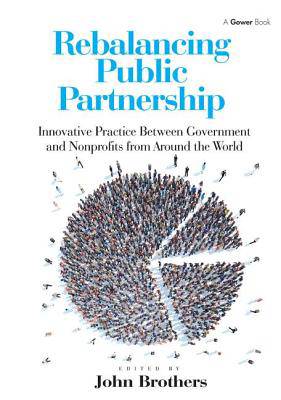
- Afhalen na 1 uur in een winkel met voorraad
- Gratis thuislevering in België vanaf € 30
- Ruim aanbod met 7 miljoen producten
- Afhalen na 1 uur in een winkel met voorraad
- Gratis thuislevering in België vanaf € 30
- Ruim aanbod met 7 miljoen producten
Zoeken
Rebalancing Public Partnership
Innovative Practice Between Government and Nonprofits from Around the World
John Brothers
Hardcover | Engels
€ 91,95
+ 183 punten
Omschrijving
In the US, as in many other Western economies, federal and state government is working to become more involved with the nonprofit sector; a sector in which many of the organizations are singularly ill-prepared and strategically unaligned to fulfill the new role that is being asked of them. Based on his original research, John Brothers brings together leading thought leaders from the United States and around the world by exploring the prevailing attitudes and perceptions of the nonprofit sector towards government and vice versa and provides advice and direction to help both sides of the equation towards effective collaborative working. The main themes cover the nature and implications of regulatory reform on the sector and how non-government organizations should reengineer their practices. There are also chapters on some of the hot button areas of government contracting and political advocacy. The text includes best-practice examples, case studies as well as tools and templates from across the sectors. Both sides of this emerging partnership need fast-track education on each other's capabilities, constraints and working practice. Dr Brothers' contributors provide some very valuable perspectives and insights that should inform and direct this process.
Specificaties
Betrokkenen
- Auteur(s):
- Uitgeverij:
Inhoud
- Aantal bladzijden:
- 210
- Taal:
- Engels
Eigenschappen
- Productcode (EAN):
- 9781472433688
- Verschijningsdatum:
- 28/07/2015
- Uitvoering:
- Hardcover
- Formaat:
- Genaaid
- Afmetingen:
- 175 mm x 246 mm
- Gewicht:
- 498 g

Alleen bij Standaard Boekhandel
+ 183 punten op je klantenkaart van Standaard Boekhandel
Beoordelingen
We publiceren alleen reviews die voldoen aan de voorwaarden voor reviews. Bekijk onze voorwaarden voor reviews.











